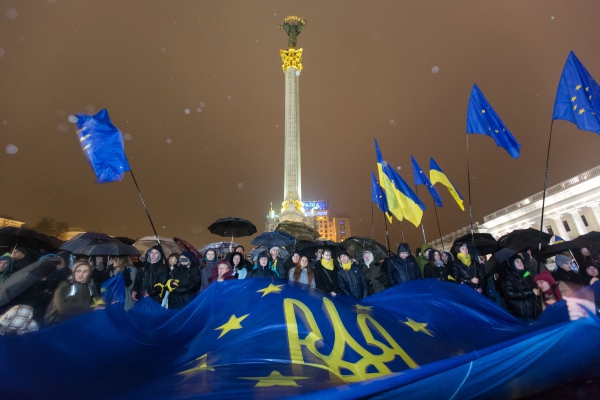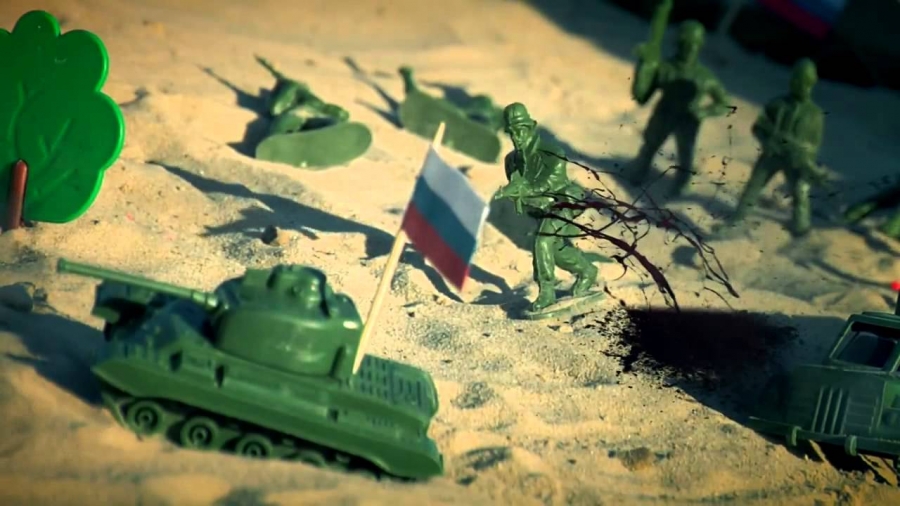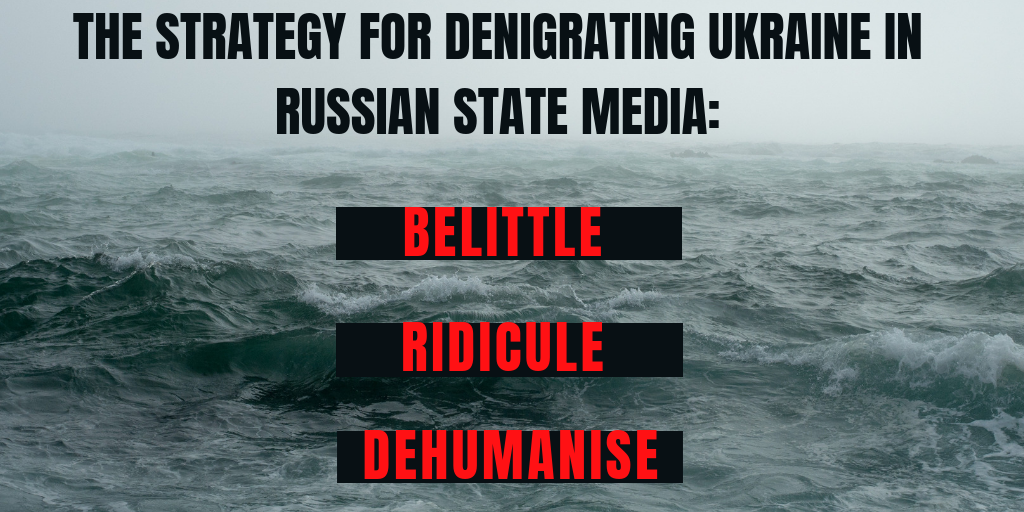For a Ukrainian version of this article, please visit Texty.org.ua
"human development strategy, a military security strategy, a public security and civil defense strategy, a strategy for the development of defense-industrial complex, an economic, environmental, information security strategy, a cybersecurity strategy, a national intelligence program, a foreign policy security strategy, national security strategy, counter-intelligence, and counter-terrorism, etc."It defines the priority areas of national security policy, its aim and objectives, and forms the basis for further reform and development.
The big question is; however, will it name Russia as the main threat and will it describe the ongoing Hybrid War as precisely as needed to counter it efficiently? I fear it might do neither.
Conceptualization of the Hybrid War

Most diplomatic initiatives, debates, analysis, and articles covering the Russian aggressions end up examining the military conflict in eastern Ukraine. One tends to focus on the security elements of the Minsk Protocol, such as an immediate and comprehensive ceasefire, withdrawal of all heavy weapons, Ukrainian control of the state border, as well as withdrawal of all foreign armed formations, military equipment, and mercenaries from the territory of Ukraine. The overall process is based on the notion that this is a conventional war and that loss of sovereignty and territorial integrity is at stake. That is to a certain extent, a grave mistake. Russia intends to prevail, but its strategy does not involve a military victory. Neither the Minsk Protocol nor Steinmeier's formula is, therefore, suitable to solve the war.Russian hybrid war is saturated in deceptions, which makes war look like peace.
- Read more: Why negotiate? Expectations for the Normandy Four meeting
- Leaked Kremlin emails show Minsk protocol designed as path to Ukraine’s capitulation – Euromaidan Press report
- The real problem with “Steinmeier’s formula” and the Russo-Ukrainian war
"Traditional physical spaces such as land, sea, air, and space are increasingly accompanied by social and built spaces such as the political, economic, cultural and infrastructural and cyber."The mind is the battlespace in Hybrid Warfare and, as a result, "are to be dominated by information and psychological warfare, to achieve superiority in troops and weapons control, morally and psychologically depressing the enemy's armed forces personnel and civil population." In their brilliant paper "What is hybrid war," Erik Reichborn-Kjennerud and Patrick Cullen claims that the main "battlespace occurs inside the cognitive spaces of key populations (domestic, international and in operational area) and key decision- and policy makers, making them, and not the military, the main target of operation." The population – not the armed forces nor the physical space - is the center of gravity. But make no mistake, the military means is always an essential element of the Hybrid War. The use of force or the threat of use of force, as well as its impact (e.g. diplomatic, economic, humanitarian and psychological) across society, defines the real battlespace. In the report "Russia's New Generation Warfare in Ukraine," Janis Berzins argues that Russia has modified warfare:
"from destruction to direct influence; from direct annihilation of the opponent to its inner decay; from a war with weapons and technology to a culture war; from the traditional (3D) battleground to information/psychological warfare and war of perceptions; from war in the physical environment to a war in the human consciousness and cyberspace; from symmetric to asymmetric warfare by a combination of political, economic, information, technological, and ecological campaigns; from war in a defined period of time to a state of permanent war as the natural condition in national life."
Russian hybrid war is saturated in deceptions, which makes war look like peace. Ambiguity is used to "complicate or undermine the decision-making processes," making a military response – or even a political response – difficult. It ensures that it falls below the threshold of war and consequently, delegitimizes any military response by both the victim and the international community. Most importantly, it is designed to avoid a confrontation with the West, while ensuring victory through the limited use of military power. The Minsk Protocol is a brilliant example of a tool that helps to uphold the hope for a peaceful resolution of what is, in fact, a long term, never-ending (hybrid) war of attrition. [highlight]Hybrid War is designed to avoid confrontation with the West while ensuring victory through the limited use of military power.[/highlight] It not only distorts what is considered peace, conflict, and war; hybrid warfare also breaks down the distinction between what is and what is not part of the battlefield. As Russian global ambitions, the Hybrid War knows no borders. It is a type of "warfare that exists round-the-clock, using a nation's total resources to shape the operational environment. It is not a set campaign; it is a way of life." It is a long-term strategy, based on an innovative use of ambiguity. It seeks to legitimize and justify “intervention” through challenging the legal framework and undermine international cohesion.Hybrid warfare also breaks down the distinction between what is and what is not part of the battlefield.
Hybrid War has become a part of Russian modus operandi wherever it has national interests. All tools are being employed globally. Only the level of intensity differs from region to region. A conceptualize understanding of the Hybrid War is crucial. If one understands what tools and scenarios might bring about defeat, one can develop a National Security Strategy that enables an efficient cross-sectorial defense.Hybrid warfare is not a set campaign; it is a way of life
A Ukrainian defeat?

In 2014, when Ukraine lacked the ability to defend itself against a full-scale military assault, Russia chose a long-term strategy. It decided on Hybrid War – the parallel and synchronized use of both non-military and military means - as a tool to destabilize Ukraine from within. Instead of fighting for the physical space (e.g. Ukraine), Russia decided to fight for the mind and consequently, influence. After all, the costs associated with a military occupation are astronomical; while political control does the same for no costs at all. Consequently, the main threat is not military invasion and occupation, but the accumulated psychological effect on both population and leadership as a result of a long-term effort to destabilize Ukraine from within. The ever-present threat has, however, shaped and will continue to shape the collective mindset at all levels of the Ukrainian society. The military threat will keep on generating profound economic, political, and diplomatic insecurity in the years to come, while little by little helping create the foundation for a future Ukrainian defeat. [highlight]Russia wants to re-establish political control over Ukraine and thus reintegrate it into the "Russian world." For this to happen, Ukraine's political landscape must change.[/highlight] Russia has won – and Ukraine and Europe have lost – when Ukraine either elects a pro-Russian government or a government who gives in to Russian pressure. This will both ensure and legitimize Russian control over Ukraine politics, and consequently, its choice of alliances. Additionally, this will remove the basis for international sanctions and create the basis for normalization between Russia and the West.The costs associated with a military occupation are astronomical; while political control does the same for no costs at all.
The outcome of a Hybrid War is a victory in the cognitive space. Russia will have succeeded in influencing the Ukrainian majority to elect what is, from a Russian perspective, the ideal president and government.
This would probably include transfer of control of the National Guard to the president and several constitutional changes to increase the power of internal forces to deny and dissolve illegal gatherings, political rallies, and demonstrations; increase control over media and social networks, infringement of basic civil and political rights such as privacy and the freedom of thought, speech, religion, press, assembly, and movement, the right to a fair trial and due process, and more. Any president or government giving in to Russian pressure would need to gradually copy the Russian legislation to be both able to remain in power and ensure a level of stability. Ukraine would slowly need to turn into an autocracy, where all power is gathered by a political elite under Russian influence, without any constitutional or institutional restrictions. Key leadership positions would be replaced by people who are considered loyal to a new president and government.Russia has won – and Ukraine and Europe have lost – when Ukraine either elects a pro-Russian government or a government who gives in to Russian pressure.
Simply theory?

- Previous references to "Malorossiya" ("Little Russians") and President Putin's frequent statements about Russians and Ukrainians being "one people",
- President Putin telling President George W. Bush during the 2008 NATO summit that Ukraine is "not even a state."
- The "Novorossiya" project and Russian president’s kind reminder that "what was called Novorossiya (New Russia) back in the tsarist days – Kharkiv, Luhansk, Donetsk, Kherson, Mykolaiv, and Odesa – were not part of Ukraine back then. These territories were given to Ukraine in the 1920s by the Soviet government."
- The November 2016 statement from the Security Service of Ukraine (SBU) "about plans of Russian secret services to destabilize the situation in Ukraine" and the so-called "The Surkov Leaks."
- President Putin's reference to "Prichernomorie" (Причерноморье) in his 2019 end-of-year press conference ("Back when the Soviet Union was created, original Russian territories that never had anything to do with Ukraine (the entire Black Sea region and Russia's western lands) were transferred to Ukraine".)
A Ukrainian victory

In the article "Putin forever: Ukraine faces the prospect of endless imperial aggression," Taras Kuzio argues that "Putin's hybrid mix of Tsarist and Soviet Russian nationalism" led to the establishment of the "Russian World Foundation" in 2007, followed by the emergence of a "Russian World" doctrine. "The 'Russian World' concept broadly aims to unite the three modern eastern Slavic nations (Russia, Belarus, and Ukraine) under Moscow's leadership, with the population of this informal empire bound together by the Russian language and the Russian Orthodox Church." The author concludes that since Ukraine is central to Putin's understanding of Russian identity and national interests, it is "difficult to imagine a settlement that would leave both parties satisfied" and that Ukraine consequently, will remain "a target of Kremlin hostility and hybrid aggression for many years to come." Unless we develop a new and efficient strategy to counter the Hybrid War, I share his outlook. In the face of Russian military superiority and its will to break international laws and conventions; its continued use of or threat of use of military force; the increasing number of casualties in Eastern Ukraine; lack of substantial Western support; an EU and NATO membership increasingly more difficult to achieve; Europe’s apparent desire to normalize relations with Russia, continued economic hardship; corruption; lack of essential reforms; continued distrust of both individual politicians, political parties, institutions, and agencies; the process of shaping both the Ukrainian and international cognitive space will continue. [highlight]As a consequence of what in essence is an enduring psychological or informational war, one shouldn’t be surprised by the gradual surfacing of the pragmatic, awful idea that the only one who can truly change the strategic challenges Ukraine is facing is Russia, the aggressor.[/highlight] Russian use of both military and non-military means will continue unabated unless effectively checked by both Ukraine and the international community. To do that, a conceptual understanding of the Hybrid War is crucial. It will allow us to defend critical vulnerabilities, avoid Russian strengths and fight it where we are strong. Our response must by hybrid as well. Conceptualization of the Hybrid War is paramount to develop and analyze the most probable and dangerous scenarios. These do not necessarily involve a full-scale invasion and subsequent occupation, but rather the “parallel and synchronized use of military and non-military means in order to destabilise Ukraine from within”. This includes exploring the protest potential of the population. At the end of the day, they elect the ones who promise to deliver the peace, stability and economic progress they demand. The single-minded focus on the military element of the Hybrid War (the “conventional war”) is a grave mistake as it allows for the misconception that Ukraine can end the war. From a military perspective, both Russia and Ukraine possess the ability to end the “conventional war”. And both have two options.Russian use of both military and non-military means will continue unabated unless effectively checked by both Ukraine and the international community.
- Russia will either win or give up its attempt to regain control over Ukraine. The latter does not seem very likely.
- Ukraine must defeat Russia or give up and gives in to Russian pressure. The former is not likely.
- Hybrid War is about influencing people to make conscious or unconscious choices beneficial to the aggressor. It's the battle of minds and it's a fight for influence.
- Russia intends to win the Hybrid War with limited use of military force. Still, the military power remains a crucial part of the Hybrid War since it, if the primary strategy fails, it is an alternative option.
Read also:
- Hybrid War in Ukraine – predictions for 2019 and beyond
- Leaked Kremlin emails show Minsk protocol designed as path to Ukraine’s capitulation – Euromaidan Press report
- What Surkov’s hacked emails tell about Russia’s hybrid war against Ukraine
- The basis for a peaceful resolution of the war in eastern Ukraine - trends at the end of 2019
- The Surkov Leaks: Major report on Russia’s hybrid war in Ukraine published at RUSI Institute





